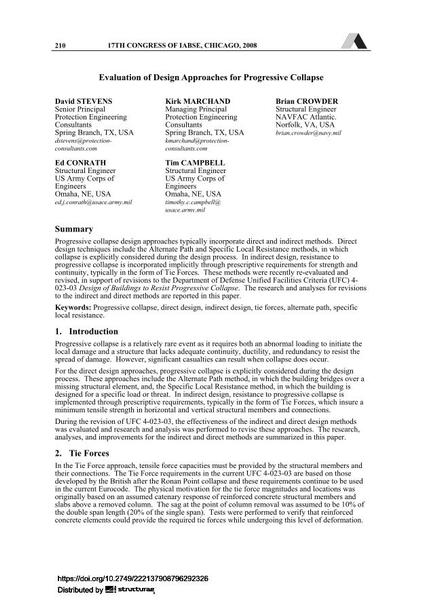Evaluation of Design Approaches for Progressive Collapse

|
|
|||||||||||
Détails bibliographiques
| Auteur(s): |
David Stevens
Kirk Marchand Brian Crowder Ed Conrath Tim Campbell |
||||
|---|---|---|---|---|---|
| Médium: | papier de conférence | ||||
| Langue(s): | anglais | ||||
| Conférence: | 17th IABSE Congress: Creating and Renewing Urban Structures – Tall Buildings, Bridges and Infrastructure, Chicago, USA, 17-19 September 2008 | ||||
| Publié dans: | IABSE Congress Chicago 2008 | ||||
|
|||||
| Page(s): | 210-211 | ||||
| Nombre total de pages (du PDF): | 8 | ||||
| Année: | 2008 | ||||
| DOI: | 10.2749/222137908796292326 | ||||
| Abstrait: |
Progressive collapse design approaches typically incorporate direct and indirect methods. Direct design techniques include the Alternate Path and Specific Local Resistance methods, in which collapse is explicitly considered during the design process. In indirect design, resistance to progressive collapse is incorporated implicitly through prescriptive requirements for strength and continuity, typically in the form of Tie Forces. These methods were recently re-evaluated and revised, in support of revisions to the Department of Defense Unified Facilities Criteria (UFC) 4- 023-03Design of Buildings to Resist Progressive Collapse. The research and analyses for revisions to the indirect and direct methods are reported in this paper. |
||||
